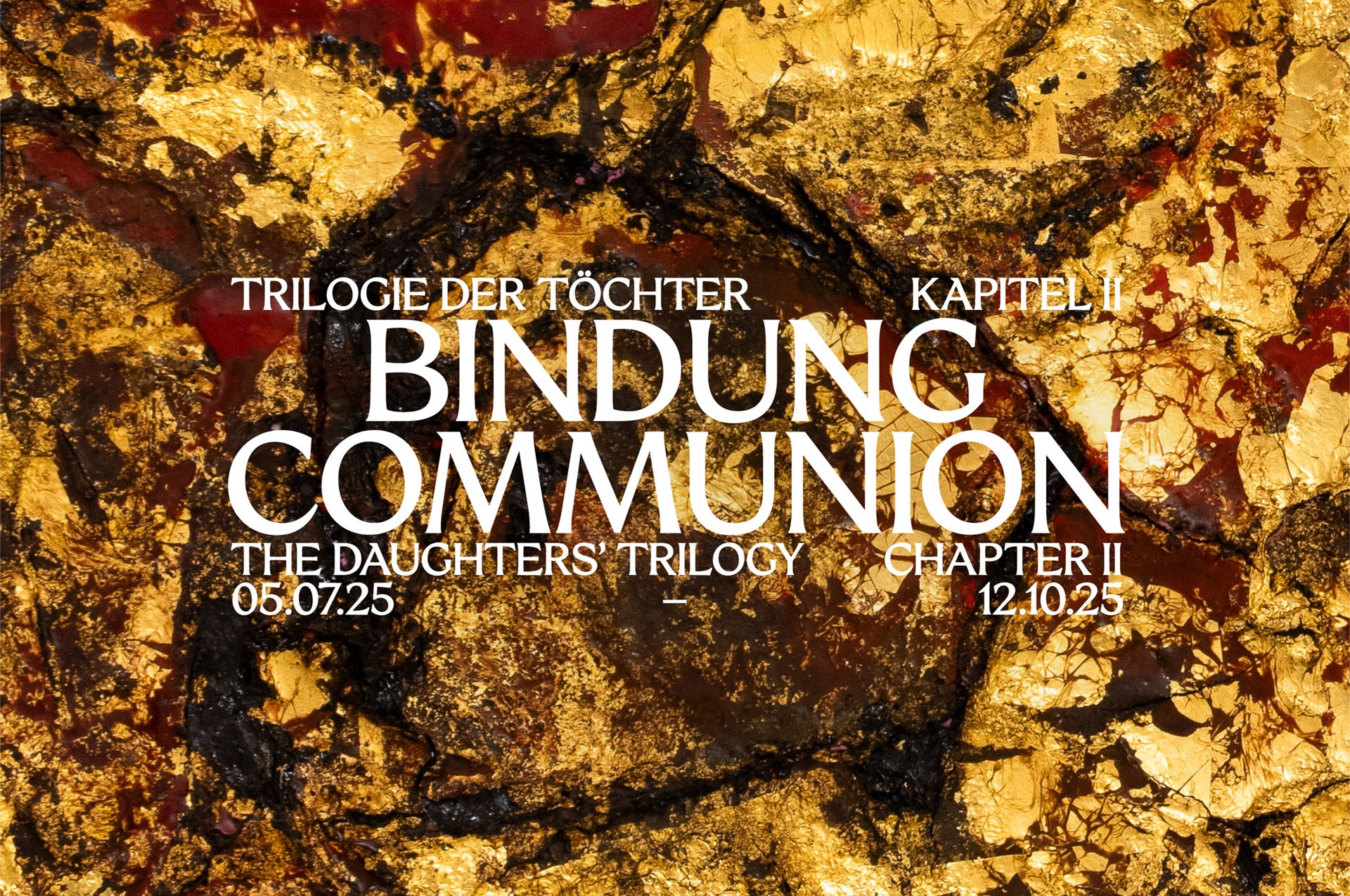The Daughters’ Trilogy. Chapter II: Bindung & communion
Gabriela Golder, Assaf Gruber, Kirtika Kain, Areez Katki, Francis Offman
05 Jul - 12 Oct 2025

Kirtika Kain, gold medium (detail), 2025. Courtesy the artist and Roslyn Oxley9 Gallery, Sydney. Photo: David Suyasa. Design: Anna Neuner.
Once upon a time, our grandmother Mamanjoon told us that our father was one of her daughters …
Let’s consider sons and daughters as (not necessarily sex-related) pieces within a patriarchal-capitalist board game.
The figure of the son plays the narcissistic individual, taking what they want and throwing the rest away after having squeezed out what they need. Such sons think they are free of all ties, apologizing for their past behavior even as they head out to extract from the next person, people, land … a repeating loop.
Let’s imagine the figure of the daughter as one who is aware of the attachments (Bindung) they are part of and who commits to new connections with a cause, a person, a more-than-human entity. They give of themselves courageously, and while doing so are willing to go through struggle, conflict and pain for the things they hold dear. What they create is something that exceeds them and allows them to grow out of the pettiness of their selves, entering into and building communion. Even when they are on their own, it is not the loneliness of the cowboy. Their individuality lies in the specificity of their relations—the way they relate to others and who they relate to—in love, pain, conflict.
In this game the daughter will look like the loser. But the loser will eventually end this hopeless game, bringing about one where winning means, in the words of the thirteen-century mystic and poet Rumi, “I am in captivity of love, that’s why I am free from both worlds.”
Curated by Nina Tabassomi
Let’s consider sons and daughters as (not necessarily sex-related) pieces within a patriarchal-capitalist board game.
The figure of the son plays the narcissistic individual, taking what they want and throwing the rest away after having squeezed out what they need. Such sons think they are free of all ties, apologizing for their past behavior even as they head out to extract from the next person, people, land … a repeating loop.
Let’s imagine the figure of the daughter as one who is aware of the attachments (Bindung) they are part of and who commits to new connections with a cause, a person, a more-than-human entity. They give of themselves courageously, and while doing so are willing to go through struggle, conflict and pain for the things they hold dear. What they create is something that exceeds them and allows them to grow out of the pettiness of their selves, entering into and building communion. Even when they are on their own, it is not the loneliness of the cowboy. Their individuality lies in the specificity of their relations—the way they relate to others and who they relate to—in love, pain, conflict.
In this game the daughter will look like the loser. But the loser will eventually end this hopeless game, bringing about one where winning means, in the words of the thirteen-century mystic and poet Rumi, “I am in captivity of love, that’s why I am free from both worlds.”
Curated by Nina Tabassomi
